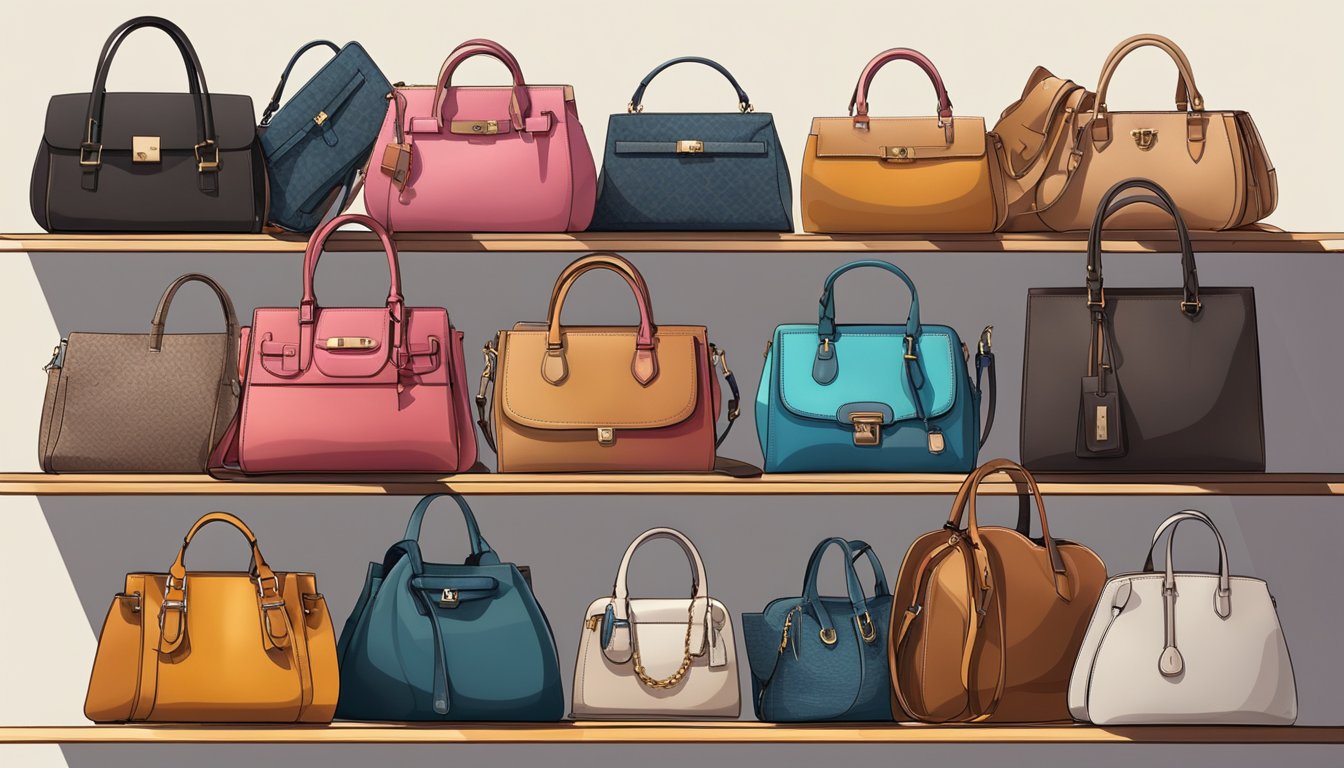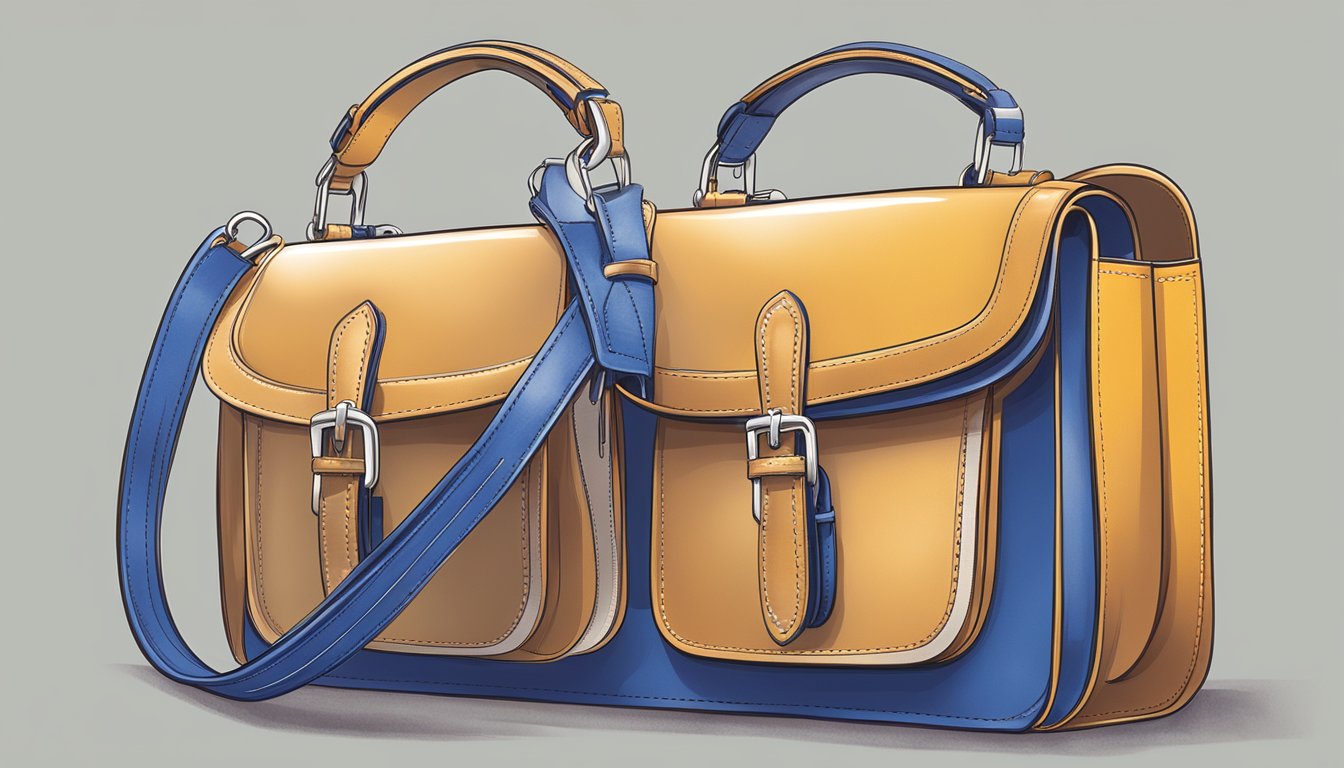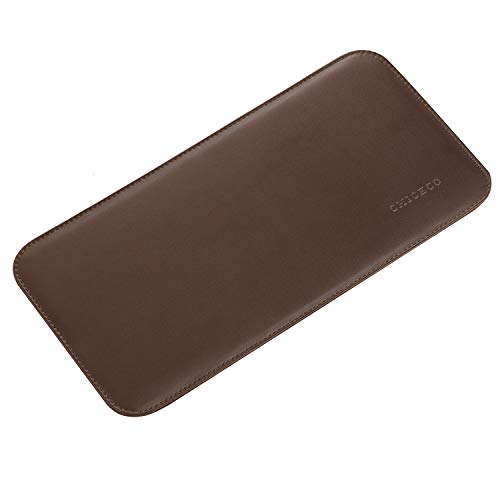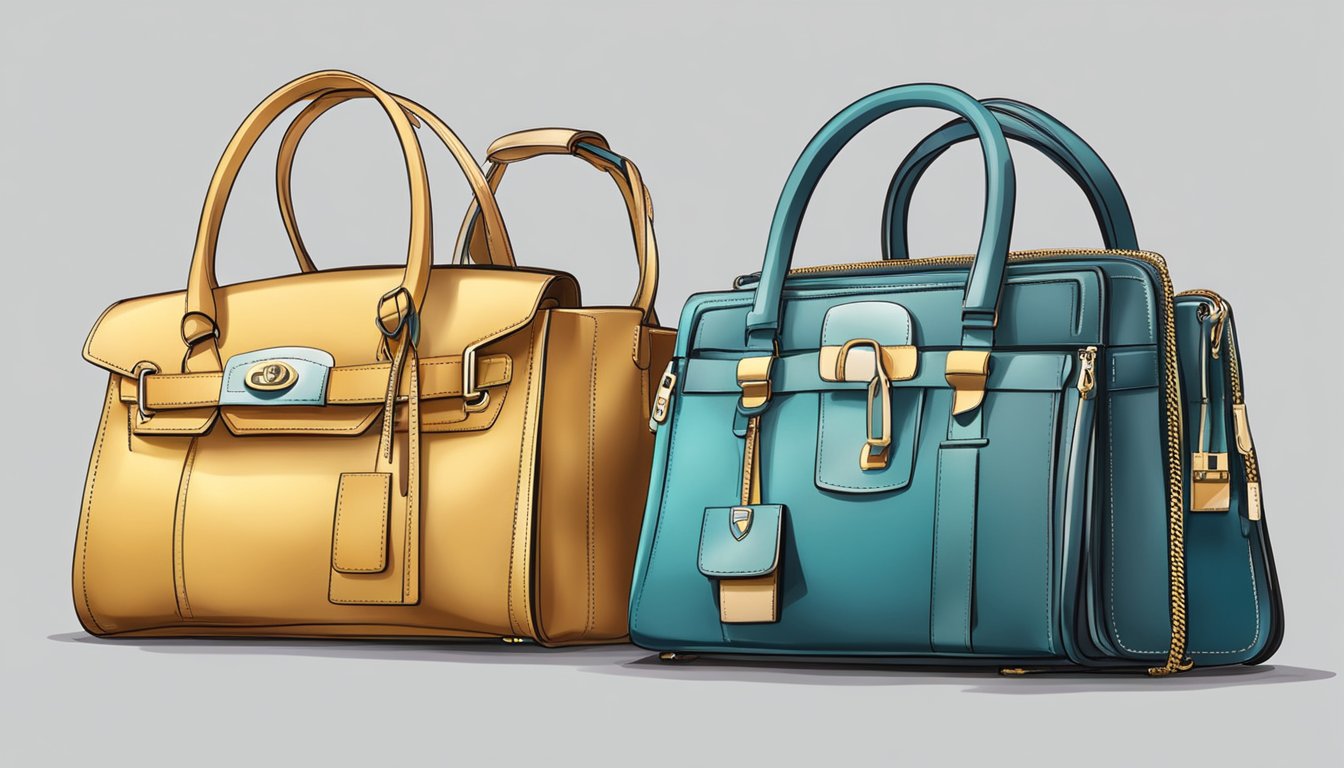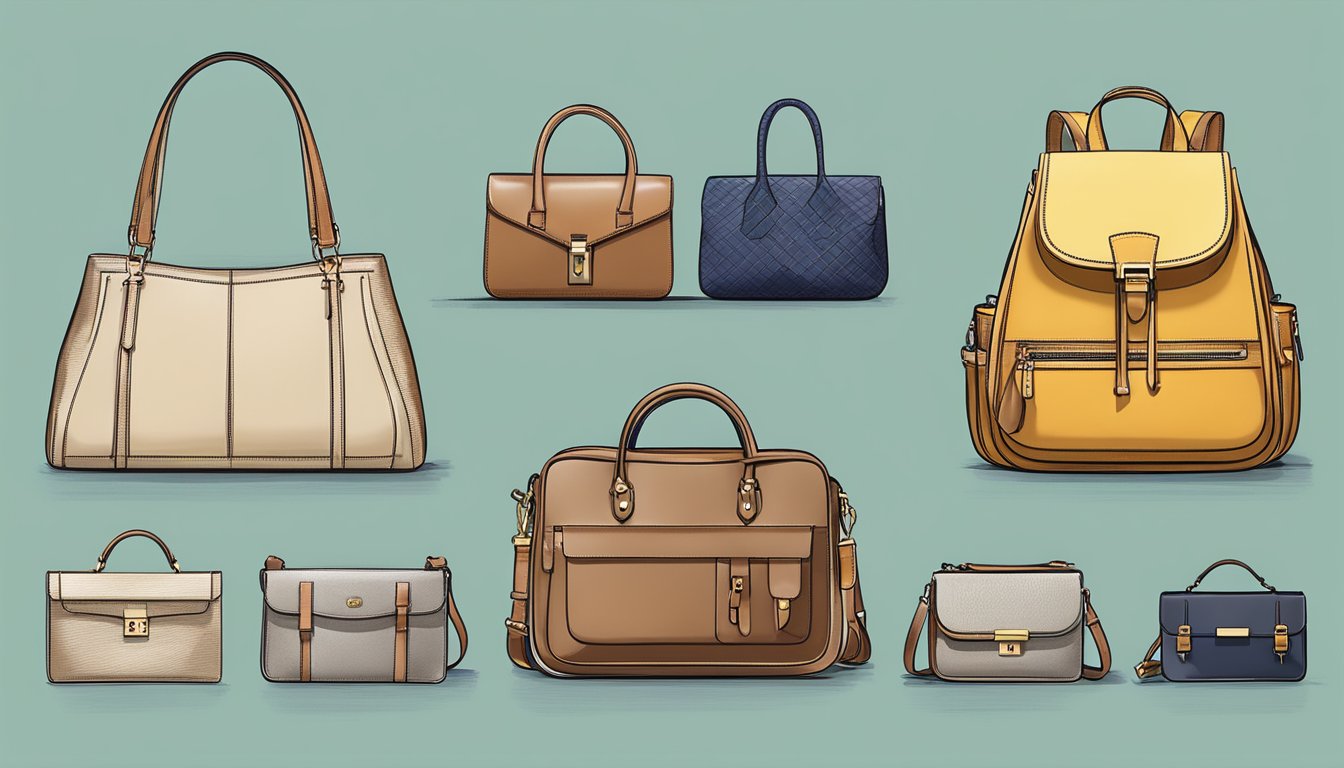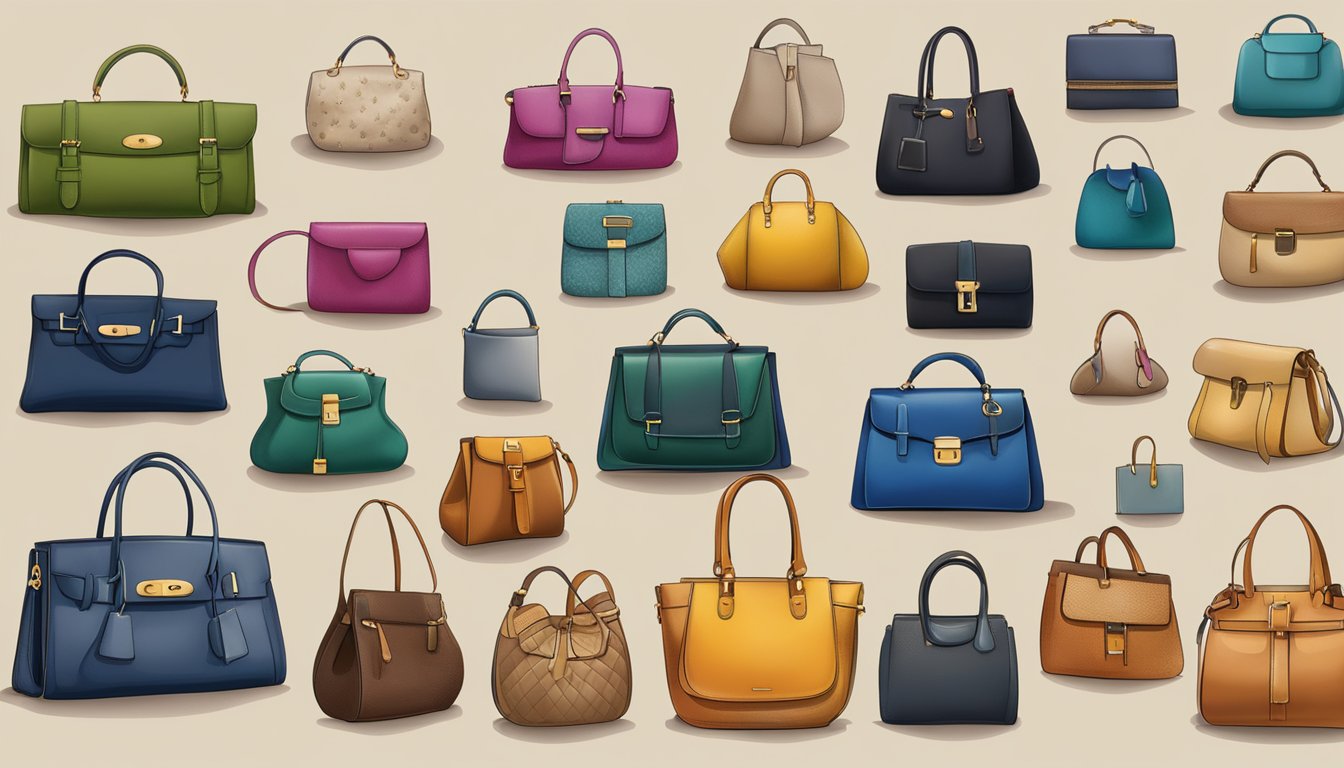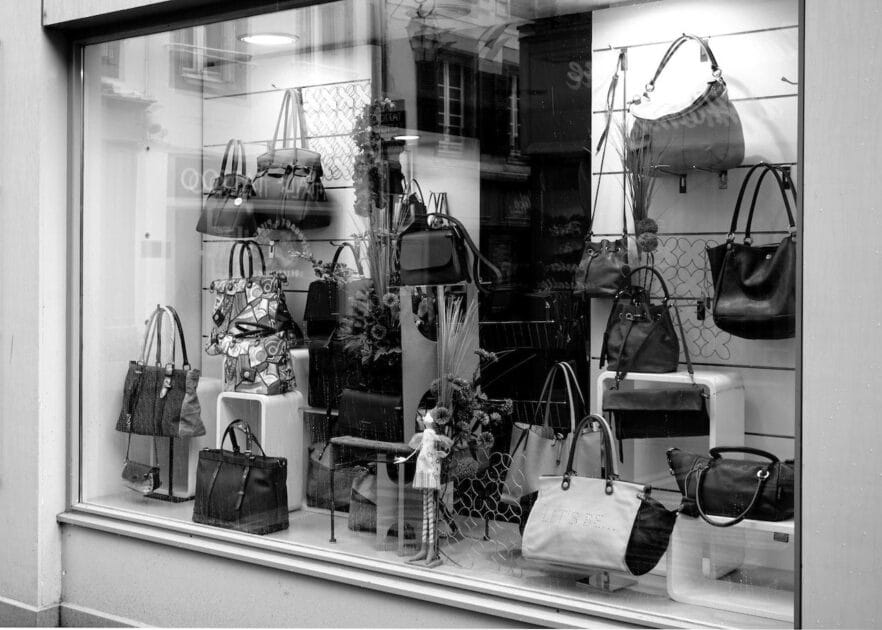If you’re a handbag lover, you know how difficult it can be to find the perfect bag. Once you do find it, you want to make sure it lasts as long as possible. But how long can you realistically expect your handbag to last? The answer to this question is not straightforward, as it depends on several factors.
Understanding Handbag Lifespan is important to help you make informed decisions when purchasing a new bag. Factors that can affect the longevity of a handbag include the material it is made from, how often it is used, and how well it is cared for. While some handbags may last for many years, others may only last for a few months.
When considering Material Matters: Leather Vs Fabric, it’s important to note that leather bags tend to last longer than fabric bags. However, this is not always the case, as some fabrics are more durable than others. Additionally, the type of leather used can impact the longevity of the bag. It’s important to consider these factors when purchasing a new bag to ensure that you get the most value for your money.
Key Takeaways
- The lifespan of a handbag depends on several factors, including the material it is made from, how often it is used, and how well it is cared for.
- Leather bags tend to last longer than fabric bags, but the type of leather used can impact the longevity of the bag.
- Proper care and maintenance can help extend the lifespan of a handbag.
Understanding Handbag Lifespan

https://www.youtube.com/watch?v=DdzxlTleihc&embed=true
As a handbag owner, you may be wondering how long your handbag will last. The lifespan of a handbag can vary depending on several factors, including the quality of the materials, how often you use it, and how well you take care of it.
One of the primary factors that determine the lifespan of a handbag is the quality of the materials. Higher quality materials, such as leather or canvas, tend to last longer than cheaper materials like polyester or nylon. If you’re looking for a handbag that will stand the test of time, investing in a high-quality material is a good place to start.
Another factor that can affect the lifespan of a handbag is how often you use it. If you’re using your handbag every day, it’s likely to wear out faster than if you only use it occasionally. However, this doesn’t mean you should avoid using your handbag altogether. Instead, consider rotating between a few different handbags to give each one a break.
Taking care of your handbag is also essential for increasing its lifespan. This includes cleaning it regularly, storing it properly, and avoiding exposing it to extreme temperatures or moisture. By taking good care of your handbag, you can help ensure that it lasts for years to come.
Overall, the lifespan of a handbag varies depending on several factors. By investing in high-quality materials, rotating between different handbags, and taking good care of your handbag, you can help ensure that it lasts for as long as possible.
Factors Affecting Handbag Durability
When it comes to the lifespan of a handbag, there are several factors that can impact its durability. Here are some of the most important ones to keep in mind:
Material Quality
The material quality of a handbag is one of the primary factors that determine its lifespan. Generally, high-quality materials like leather, canvas, and nylon are more durable and long-lasting than cheaper materials like synthetic leather or plastic.
Structure and Design
The structure and design of a handbag can also impact its durability. A well-structured bag with reinforced seams and sturdy hardware is more likely to last than a flimsy, poorly constructed bag. Similarly, a bag with a classic, timeless design is less likely to go out of style and more likely to be used for years to come.
Overloading
Overloading your handbag can put unnecessary strain on its straps, zippers, and other components. Try to avoid carrying more than the bag can comfortably hold, and distribute the weight evenly to avoid putting too much pressure on any one area.
Wear and Tear
Regular wear and tear is inevitable with any handbag, but taking steps to minimize it can help extend the bag’s lifespan. For example, avoid setting your bag on rough surfaces or exposing it to extreme temperatures or moisture.
Maintenance
Proper maintenance is essential for keeping your handbag in good condition. Regularly cleaning and conditioning leather bags, wiping down canvas bags, and replacing worn-out hardware can all help extend the bag’s lifespan.
By keeping these factors in mind, you can help ensure that your handbag lasts for years to come.
Material Matters: Leather Vs Fabric
https://www.youtube.com/watch?v=T1uCBbckBOw&embed=true
When it comes to handbags, one of the most important decisions you’ll make is choosing between leather and fabric. Both materials have their pros and cons, so it’s important to consider your lifestyle and preferences before making a decision.
Leather Bags
Leather bags are known for their durability and longevity. Full-grain leather is the highest quality leather available, and it’s often used in high-end handbags. It’s durable, resistant to wear and tear, and develops a beautiful patina over time. However, leather bags can be quite expensive, and they require some maintenance to keep them looking their best.
Lambskin is another popular leather option for handbags. It’s soft and supple, but it’s also more delicate than other types of leather. Lambskin bags may not last as long as full-grain leather bags, but they can be a great option if you’re looking for a luxurious feel.
Fabric Bags
Fabric bags are often made from materials like nylon or coated canvas. They’re lightweight and easy to clean, which makes them a great option for everyday use. However, they may not last as long as leather bags, and they may not have the same level of sophistication.
« How to Protect Purse Handles: Tips and Tricks for Keeping Your Bag in Good Condition
How to Prevent Cowhide Purse from Shedding »
One advantage of fabric bags is that they’re often more affordable than leather bags. They come in a wide range of colors and patterns, so you can find one that matches your personal style. However, they may not be as durable as leather bags, and they may show signs of wear and tear more quickly.
In the end, the choice between leather and fabric comes down to your personal preferences and lifestyle. If you’re looking for a bag that will last for years and develop a beautiful patina over time, a leather bag may be the way to go. If you want something that’s easy to clean and more affordable, a fabric bag may be the better choice.
Care and Maintenance for Longer Lasting Handbags
https://www.youtube.com/watch?v=DFvJw0UpgWw&embed=true
Taking care of your handbags is essential if you want them to last longer. Here are some tips to help you keep your handbags in great condition:
Dust and Pens
Dust can accumulate on your handbag over time, so it’s important to wipe it down regularly with a soft cloth. Avoid using harsh chemicals or abrasive materials that could scratch the surface. If you accidentally get pen marks on your bag, try using a white eraser to gently rub them away.
Scratches and Color
Scratches can happen, but you can minimize their appearance by using a leather conditioner or oil. This will also help to keep the color of your bag from fading. Be sure to test any products on a small, inconspicuous area first to make sure they don’t cause any damage.
Cleaning and Waterproofing
If your bag gets dirty, use a mild soap and water to clean it. Be sure to rinse thoroughly and allow it to air dry. To protect your bag from water damage, consider using a waterproofing spray. Just be sure to follow the instructions carefully and test on a small area first.
Oiled and Hardware
If your bag is made of oiled leather, be sure to avoid using any products that contain alcohol or acetone. These can strip the oil from the leather and cause it to dry out. If your bag has hardware, such as buckles or zippers, be sure to keep them clean and free of dirt or debris.
Food Stains and Ink Stains
Food stains can be removed by crushing white chalk on the stain for several hours and wiping it away with a clean cloth. For ink stains, try rubbing them with a white eraser. If the stain persists, bring your handbag to a professional cleaner for removal.
Tips
Here are a few additional tips to help keep your handbag looking its best:
- Store your handbag in a dust bag or pillowcase to protect it from dust and light.
- Avoid carrying heavy items that could cause the bag to lose its shape.
- Don’t overstuff your bag, as this can cause the seams to weaken over time.
- Rotate your bags regularly to prevent excessive wear and tear on any one bag.
By following these simple tips, you can help to ensure that your handbags last for years to come.
The Role of Storage in Handbag Longevity
Proper storage is essential to increase the lifespan of your handbag. When you’re not using your handbag, it’s crucial to store it in a safe place to protect it from dust, moisture, and other elements that can damage the material. Here are some tips for storing your handbag:
-
Use a dust bag: A dust bag is a fabric bag that comes with most designer handbags. It’s designed to protect your handbag from dust and other elements. Make sure to use the dust bag to store your handbag when you’re not using it. If your handbag didn’t come with a dust bag, you can purchase one separately.
-
Avoid plastic bags: Never store your handbag in a plastic bag. Plastic bags can trap moisture, which can cause the material to warp or crack. Instead, use a breathable fabric bag like a dust bag.
-
Stuff your handbag: When you’re not using your handbag, stuff it with tissue paper or a soft cloth to help it maintain its shape. This will prevent the material from sagging or becoming misshapen.
-
Store your handbag in a cool, dry place: Avoid storing your handbag in a humid or damp environment. Moisture can cause the material to mold or mildew. Instead, store your handbag in a cool, dry place like a closet or a shelf.
-
Rotate your handbags: If you have a collection of handbags, it’s a good idea to rotate them regularly. This will prevent one handbag from being used too often, which can cause it to wear out faster.
By following these simple tips, you can help increase the lifespan of your handbag and keep it looking new for years to come.
Investing in Designer Handbags
https://www.youtube.com/watch?v=X2GgGtZTZIg&embed=true
If you’re considering investing in designer handbags, there are a few things to keep in mind. First, not all designer bags are created equal. Some brands, like Louis Vuitton, Gucci, and Dior, are known for their high-quality and luxurious designs, while others may not hold their monetary value as well.
When investing in designer handbags, it’s important to do your research. Look for bags made from high-quality materials, like leather or exotic skins, and pay attention to details like stitching and hardware. Designer bags with unique or limited edition designs may also hold their value better over time.
One tip for investing in designer handbags is to buy pre-loved bags. Buying second-hand can be a great way to save money on a high-end bag, and many pre-loved bags are still in excellent condition. Just be sure to authenticate the bag before making a purchase to ensure that you’re getting the real deal.
Another thing to keep in mind when investing in designer handbags is to avoid trendy styles. While trendy bags may be popular now, they may not hold their value as well over time. Instead, look for classic styles that have been popular for years, like the Fendi Baguette or the Coach Duffle.
Overall, investing in designer handbags can be a great way to add some high-end luxury to your collection while also potentially increasing your monetary value. Just be sure to do your research and invest in high-quality, classic styles that will stand the test of time.
The Lifespan of Different Handbag Styles
Different handbag styles have varying lifespans based on their design, materials, and usage. Here are some examples of how long different handbag styles can last:
-
Tote bags: Tote bags are often made of durable materials like canvas or leather, which can withstand wear and tear. With proper care, a tote bag can last for several years.
-
Crossbody bags: Crossbody bags are designed to be worn across the body, which distributes the weight evenly and reduces strain on the shoulder. This design can help extend the lifespan of the bag. Crossbody bags made of leather or other high-quality materials can last for several years.
-
Shoulder bags: Shoulder bags are a classic style that can last for many years. However, the lifespan of a shoulder bag can be affected by the weight of the contents and the material it is made of. A leather shoulder bag can last for several years with proper care, while a fabric shoulder bag may not last as long.
-
Clutch bags: Clutch bags are often used for special occasions and are not typically used on a daily basis. With proper care, a clutch bag can last for many years.
-
Vintage bags: Vintage bags can be made of high-quality materials and have unique designs that make them highly sought after. However, the lifespan of a vintage bag can be difficult to determine as it depends on the bag’s age, condition, and materials.
In general, the lifespan of a handbag depends on how well it is cared for, the materials it is made of, and how often it is used. With proper care and maintenance, most handbags can last for several years.
Cost Vs Durability in Handbags
When shopping for a handbag, one of the biggest considerations is cost versus durability. Do you splurge on an expensive designer bag that will last for years, or do you opt for a cheaper option that may not hold up as well over time?
Expensive handbags often come with a higher price tag due to the quality of materials used and the craftsmanship that goes into making them. Brands like 3.1 Phillip Lim, Alexander Wang, Mulberry, Givenchy, Celine, and YSL are known for producing high-end, durable bags that can last for years with proper care and maintenance. However, these bags can be quite expensive, and not everyone has the budget to splurge on a designer bag.
On the other hand, cheaper handbags may not be made with the same quality materials or attention to detail as their more expensive counterparts. While these bags may be more affordable, they may not hold up as well over time and may need to be replaced more frequently.
When considering cost versus durability, it’s important to think about how often you plan to use the handbag and how long you want it to last. If you’re someone who likes to switch up your handbag often, a cheaper option may be the way to go. However, if you’re looking for a bag that will last for years and can be worn with a variety of outfits, investing in a more expensive, durable option may be worth it in the long run.
It’s also worth noting that you don’t always have to pay full price for a designer handbag. Many high-end brands offer deals and discounts throughout the year, and you can often find these bags on sale online or in outlet malls. So, if you have your heart set on a particular designer bag but don’t want to pay full price, it’s worth keeping an eye out for deals and sales.
Ultimately, the decision between cost and durability comes down to personal preference and budget. Whether you opt for an expensive designer bag or a more affordable option, taking care of your handbag and keeping it clean can help extend its lifespan.
Handbags and Lifestyle: A Consideration
When it comes to handbags, your lifestyle plays a significant role in determining their lifespan. Here are some factors to consider:
Travel
If you’re a frequent traveler, you’ll want to invest in a durable and sturdy handbag. Look for bags made from materials that can withstand wear and tear, such as nylon or leather. A crossbody bag with multiple compartments can also be useful for keeping your essentials organized and easily accessible while on the go.
Mom and Baby
If you’re a mom, you’ll want to choose a bag that can hold all of your baby’s essentials while still being stylish and comfortable to carry. A tote or backpack with plenty of pockets and compartments can be a great option. Look for bags made from easy-to-clean materials, such as nylon or faux leather, to make spills and stains a breeze to clean up.
Borrowing
If you’re someone who likes to borrow handbags from friends or family, it’s important to treat them with care. Avoid overstuffing the bag, which can cause it to lose its shape, and be mindful of any spills or stains. If you’re borrowing a designer handbag, be sure to follow any care instructions provided by the owner to ensure its longevity.
School and Work
If you’re using your handbag for school or work, you’ll want to look for a bag that’s both functional and stylish. A tote or messenger bag with a laptop compartment can be a great option for carrying your work essentials, while a backpack can be a comfortable and practical choice for students.
Shopping
If you’re using your handbag for shopping, you’ll want to choose a bag that’s roomy enough to hold all of your purchases. Look for bags with a wide opening and plenty of interior space, such as a tote or hobo bag. You may also want to consider a bag with a detachable shoulder strap for added convenience.
Colors and Materials
When it comes to handbags, the color and material you choose can impact their lifespan. Light-colored bags are more prone to stains and discoloration, while bags made from delicate materials, such as lambskin, may require more care to maintain their appearance. Opting for darker colors and sturdier materials, such as leather or nylon, can help extend the life of your handbag.
Quality Matters
Finally, it’s important to invest in a well-made handbag that’s built to last. Look for bags from reputable brands with a reputation for quality craftsmanship and materials. While designer handbags may come with a higher price tag, they’re often made from superior materials and designed to last for years with proper care.
Conclusion
https://www.youtube.com/watch?v=lH2y1SfMILQ&embed=true
In conclusion, the lifespan of your handbag depends on various factors such as the quality of the material, the craftsmanship, and how well you take care of it. If you invest in a new high-quality handbag, you can expect it to last for several years. However, if you opt for a cheaper option, it may not last as long.
The lining of the handbag is also an important factor to consider. A good quality lining will not only protect the interior of your bag but also ensure that it lasts longer. Additionally, the handles of your handbag are also crucial to its longevity. If the handles are not well-constructed, they may break or wear out quickly.
To ensure that your handbag lasts as long as possible, it is important to take good care of it. This includes storing it properly, cleaning it regularly, and avoiding overloading it with heavy items. When not in use, it is best to store your handbag in a dust bag or cover to protect it from dust and moisture.
Overall, investing in a high-quality handbag with good craftsmanship and taking care of it properly can ensure that it lasts for many years. So, take the time to choose the right handbag for you and make sure to give it the care it deserves.
Frequently Asked Questions
https://www.youtube.com/watch?v=EN2kUhubB4g&embed=true
What is the average lifespan of a leather handbag?
The lifespan of a leather handbag can vary depending on several factors such as the quality of the leather, the frequency of use, and the care it receives. On average, a well-made leather handbag can last anywhere from 5 to 10 years or more with proper care.
Do luxury handbags last longer than non-luxury ones?
Luxury handbags are often made with higher quality materials and craftsmanship, which can contribute to a longer lifespan. However, the lifespan of a handbag ultimately depends on how well it is cared for. With proper care, a non-luxury handbag can last just as long as a luxury one.
How long can a faux leather handbag last?
Faux leather handbags are typically less durable than genuine leather ones and may not last as long. With proper care, a well-made faux leather handbag can last up to 2-3 years.
What are some tips for taking care of leather handbags?
To prolong the lifespan of a leather handbag, it is important to keep it away from direct sunlight and heat sources, as well as moisture and humidity. Regularly cleaning and conditioning the leather can also help maintain its quality and prevent cracking or fading.
Can a Louis Vuitton purse last a lifetime?
While Louis Vuitton purses are made with high-quality materials and craftsmanship, they are not indestructible. With proper care, a Louis Vuitton purse can last for many years, but it may not last a lifetime.
How long should a Coach purse be expected to last?
A well-made Coach purse can last for several years with proper care. On average, a Coach purse can last anywhere from 3 to 5 years or more, depending on how frequently it is used and how well it is cared for.

